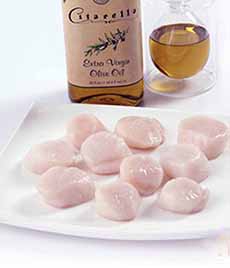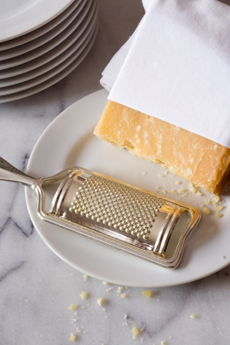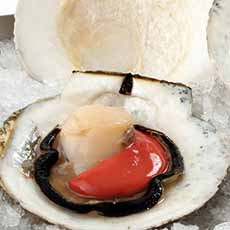RECIPE: Baked Scallops & Linguine For National Baked Scallops Day
|
March 12th is National Baked Scallops Day. This delicious seafood pasta dish tops lemony linguine with sea scallops that are coated in panko breadcrumbs and baked. It’s an easy weeknight dish. Ingredients 1. PREHEAT the oven to 375°F. Rinse the scallops and pat dry. Cover a baking sheet with parchment paper and set aside. 2. BEAT the egg in a small bowl. Place the flour in a small shallow dish. In a separate bowl, combine the breadcrumbs, grated cheese and garlic. 3. COAT each scallop in the egg, then the flour and then the breadcrumb mixture. Once coated on both sides, place the scallops on a baking sheet. 4. BAKE for 12-15 minutes or until the scallops are opaque and firm and the breadcrumbs have browned. Meanwhile… 5. BRING a large pot of salted water to a boil. Cook the pasta according to package directions. Drain, reserving 1 cup of pasta water. 6. MIX together the lemon zest, juice, olive oil and garlic in a large bowl. Add the hot cooked pasta into a pan with the lemon mixture; stir to coat. Add the hot starchy pasta water to thin the sauce, as desired. 7. DIVIDE the pasta into individual bowls or plates and top with the scallops. Garnish with the fresh parsley and Parmigiano-Reggiano. The fossil record shows that scallops were thriving more than 200 million years ago. The earliest known records of true scallops (those with a ctenolium) can be found from the Triassic period [source]. Today, there are more than 300 living species of scallops. All are members of the Pectinidae family, and are bivalves, with a hinged shell. Scallops are found around the world, deeper salt water. Unlike mussels and oysters, the scallop cannot close and seal its shell completely. Some species can actually swim! The edible portion of the scallop is actually the bivalve’s adductor muscle, which it uses to open and close its shell. It uses this function to propel itself through the water [source]. Like most seafood, scallops are a healthy food: low in calories and rich in protein. They are a very good source of omega-3 fatty acids and vitamin B12, and a good source of important minerals such as copper, iron, manganese, phosphorus, selenium and zinc. Here are two of our favorite scallop recipes: |
|



